
The Business of Fashion
Agenda-setting intelligence, analysis and advice for the global fashion community.

Agenda-setting intelligence, analysis and advice for the global fashion community.
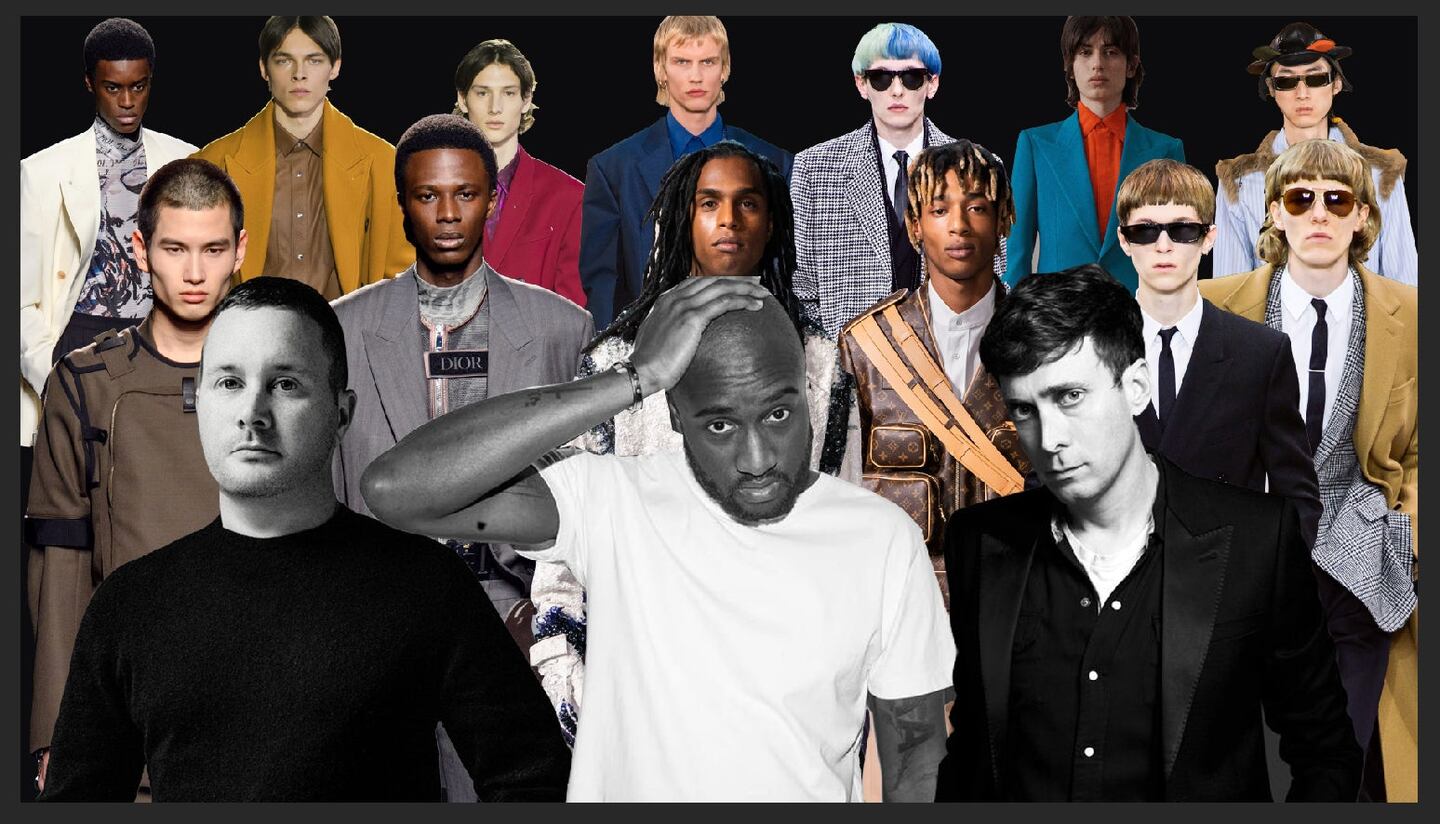
PARIS, France — On Tuesday, the men's fashion scrum will descend upon Paris, the last-but-most-important leg of their five-city tour, which started with a modest proposal in New York a few weeks back and culminates with a bang in the City of Lights.
There's certainly plenty to see. Virgil Abloh at Louis Vuitton, Kim Jones at Dior Men and of course, Hedi Slimane at Celine: each is a star in his own right, and each is designing for one of the biggest fashion houses in the world.
Which all happen to belong to LVMH, the 70-maison-strong French conglomerate, which made a string of high-profile changes in its men's businesses in 2018, bringing Off-White designer Abloh to Louis Vuitton and creating a domino effect that saw former Vuitton menswear designer Jones head to Dior, and longtime Dior Homme designer Kris Van Assche jump over to Berluti. In the midst of those moves came the appointment of Hedi Slimane at Celine, which came with the news that he would also be introducing menswear to the brand previously led by Phoebe Philo.
But it doesn't end there. Givenchy and Loewe, too, are placing greater muscle behind their men's strategies, positioning LVMH to tap into a wide range of tastes in a menswear market that is rapidly shifting. At Pitti Uomo last week, Givenchy designer Clare Waight Keller debuted her first full menswear collection for the label since taking over from Riccardo Tisci in 2017, emphasising tailoring over Tisci's slick streetwear, which came to define his tenure at Givenchy. And then there's Loro Piana, the Italian cashmere house that rivals Brunello Cucinelli in the upscale-casual space, popular with bankers on Wall Street and investors in Silicon Valley.
ADVERTISEMENT
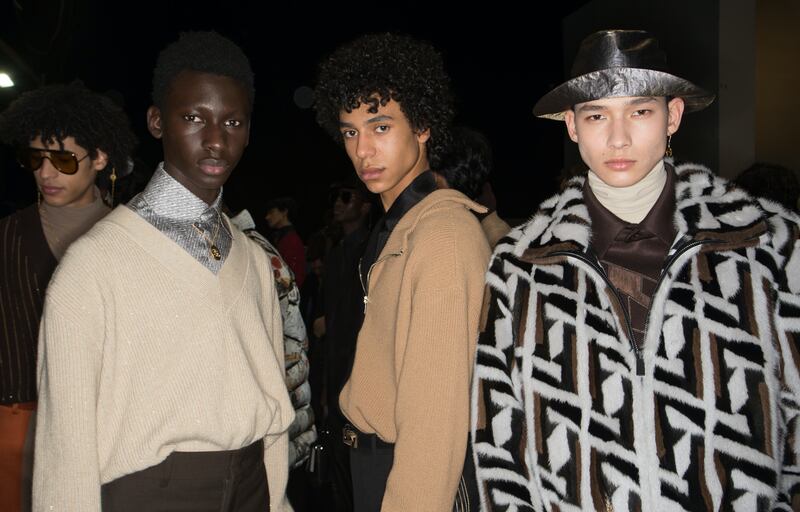
Backstage at the Fendi Autumn/Winter 2019 menswear show | Source: InDigital.Tv
"The last season in Paris, there was Loewe, JW Anderson, Givenchy, Vuitton, Dior, Celine and Berluti. We were like, boom boom boom," said Sidney Toledano, Chairman and Chief Executive of the LVMH Fashion Group. "Paris became the menswear capital in terms of creativity... LVMH in particular has been excellent in the last seasons because we have the talent, the organisation."
LVMH, which generated about $17.6 billion (€15.5 billion) from its fashion and leather goods businesses in 2018, understands that future growth will not only come from emerging markets, but new categories of consumers within those markets. At LVMH’s top brands, Louis Vuitton and Dior, men’s categories — including ready-to-wear, shoes, watches and leather goods — now account for approximately 25 percent of sales, according to Citi Research estimates.
“For brands such as LV and Dior that have a strong leather goods business, it’s rather unbalanced. Brands like Givenchy are probably more balanced,” said Citigroup analyst Thomas Chauvet.
Menswear is growing much faster [than womenswear].
But while men’s is a smaller percentage of the overall pie at LVMH, it’s a fast-growing category, with increases “definitely in the double digits,” adds industry analyst Luca Solca. “Menswear is growing much faster [than womenswear].” Menswear at the group is growing at a faster rate than the pace of the overall fashion and leather goods categories.
And yet, the market for men’s high-end clothing is not a free-for-all. Total sales of women’s designer clothes continues to outpace men’s globally. But appetite for men’s designer fashion and footwear is still growing steadily, with the market projected to reach $46 billion by 2023, according to data from Euromonitor International.
The uptick can be attributed to two main drivers: a global move towards more casual, fashion-driven clothing and a rise in sales in Asia — especially China — where men are more fashion-forward than anywhere else.
“The market worldwide is going to convert from the classic men’s business to [being] more fashion-oriented, and the country that’s going to weigh a lot on the market is China,” Toledano said. “Chinese men are crazy about fashion.”
ADVERTISEMENT
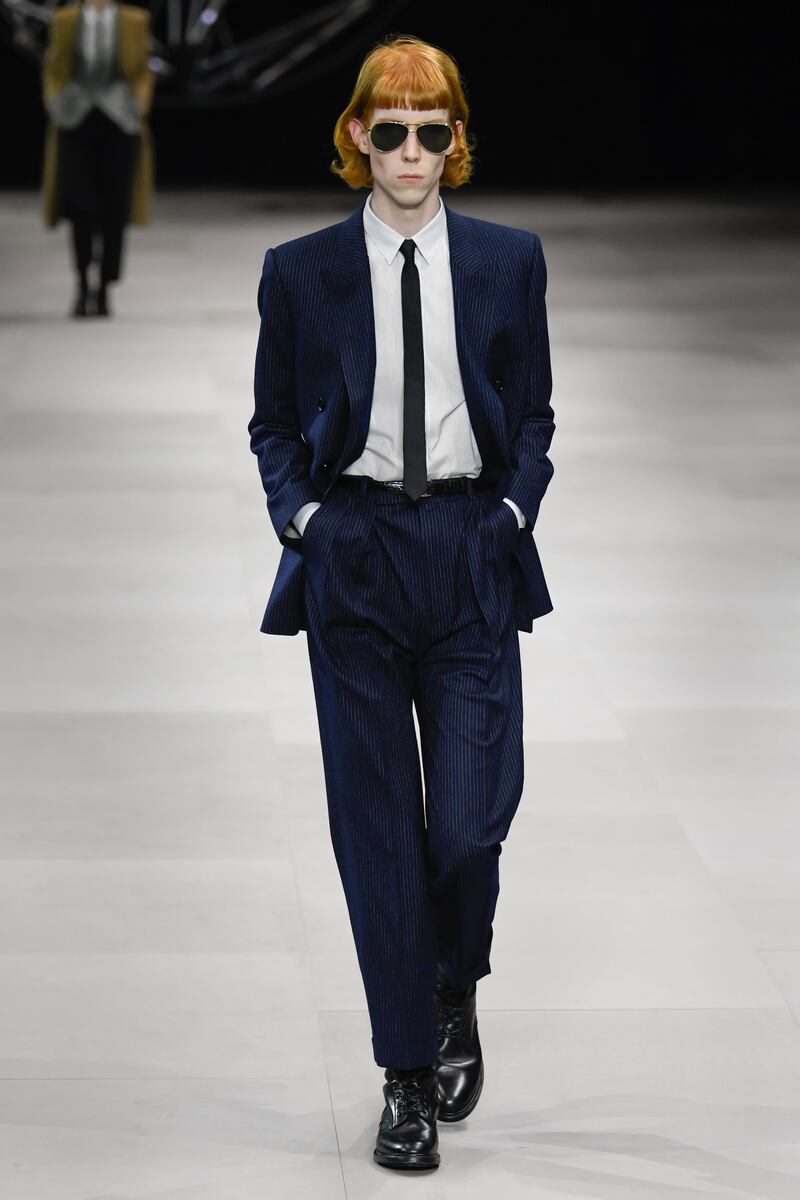
Hedi Slimane's first Celine menswear collection for Autumn/Winter 2019 | Source: InDigital.Tv
Much of that growth is coming from more casual attire, with sneakers and bomber jackets supplanting a matching blazer, slacks and wingtips. From 2013-2018, men’s footwear was the fastest-growing designer category across both genders, with a compound annual growth rate (CAGR) of 4 percent. By 2018, it was worth $10.5 billion alone.
But why now? The fashion-isation of the male wardrobe reflects the tastes of a new generation of luxury spenders, who have grown up in what Moda Operandi men’s fashion director Josh Peskowitz calls the post-Jordan era. The introduction of Nike’s Air Jordan sneakers in 1985 — the first truly hyped sneaker — normalised male consumers’ desire for fashion.
“Everyone who has come up since then has done so with the consciousness of men’s fashion,” Peskowitz said. “Sneakers were the entryway.”
Slimane's appointment at Dior Homme in 2000 marked another seminal moment for the fashion industry. He popularised the skinny-tailored silhouette, dictating the way men would dress for the next two decades. And Dior Homme's dominance in the Japanese market in particular paved the way for menswear in the burgeoning Asian market. In 2018, the market for men's designer apparel alone in Asia-Pacific hit $8.8 billion, or nearly a third of worldwide sales.
The global rise of K-Pop as a driver of culture has also propelled men's fashion forward, not only thanks to their large influence on the Chinese market, but also their global impact. For instance, Jones recently collaborated with boy band BTS on Dior Men looks for their world tour.
"K-Pop stars like G-Dragon are wearing super-high-end designer clothes, and if that's what people are seeing as an example…," Peskowitz said.
And LVMH brands are catering to them. For instance, when Fendi relaunched its menswear with a wacky sportswear aesthetic in 2011, the Asian consumer became a priority.
ADVERTISEMENT
Fendi Man made a very strong start in Asia. We could see the desire that Chinese men have had to have fun.
"Fendi Man made a very strong start in Asia. We could see the desire that Chinese men have had to have fun," Fendi Chief Executive Serge Brunschwig told BoF. "The bug's eyes motif and the logo have been successful, but it continues with our shift towards more tailoring."
The house even collaborated with Hong Kong superstar Jackson Wang on the song “FendiMan,” which a song that reached number one in two iTunes categories in the US last year. Meanwhile, Chinese actor Timmy Xu opened the brand’s recent show in Shanghai. Global sales at the label increased by double-digit in 2018.
These cultural shifts have all added up to men under 50 representing a major opportunity for luxury brands. “This man is more image-driven, more conscious of their looks, and more likely to spend money on their looks,” said Marguerite Le Rolland, a research analyst at Euromonitor International.
In order to capitalise on this, LVMH has installed a bench of star designers at the top brands, strategically shifting the conversation to the men’s market. This has helped to further accelerate sales in Asia, where male consumers are more adventurous with ready-to-wear, and are more likely to carry a personal leather item (such as a fanny pack or a handbag) on a regular basis. (The Asian market makes up about 27 percent of the global market for designer men's apparel, while it makes up 22 percent of the global market for women's apparel, according to Euromonitor.)
If you don't have the tailoring, you look like any streetwear brand; you lose the elegance.
Of course, there are challenges. One is the continued contraction of the market for men’s suiting in the Western world. Brands are also bracing for the inevitable burst of the designer sneaker boom, which has been continuing apace for several years now. A return to tailoring via separates — a trend led by Abloh and Jones, nonetheless — indicates that suiting will still be worn, albeit not in the traditional way. Perhaps traditional leather shoes and boots will make a rebound, too.
“For me, [relying on] sneakers and t-shirts is the easy way — and can be dangerous,” Toledano said. “You have to include them, but most of the big designers today understand that you need tailoring. You express it in a coat, a jacket or suit. If you don’t have the tailoring, you look like any streetwear brand; you lose the elegance. Tailoring needs know-how.”
But most importantly, Toledano said that the group is making a concerted effort to keep the products within each brand distinctive. The brands are responding to similar market forces but, there is no overall menswear strategy across the group’s brands.
“We aren’t saying everybody should do this or that. There is some co-ordination at retail, obviously, but the rest is independent,” he said. “What we want is to have enough talented designers to bring a unique identity. Berluti will not look like Dior, Dior will not look like LV.”
Here, BoF outlines the opportunities for several of the leading brands in the portfolio, and where they might face challenges ahead.
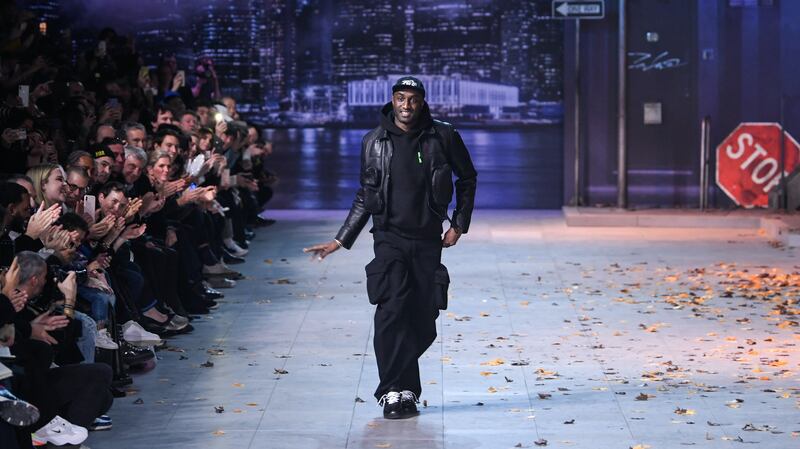
Virgil Abloh at the Louis Vuitton Autumn/Winter 2019 menswear show | Source: InDigital.Tv
LOUIS VUITTON
The men's business at LVMH's cash cow was already strong, thanks to an impressive run by Kim Jones, whose blockbuster collaboration with Supreme signalled the drops-driven distribution model moving to high fashion.
Opportunities: Jones' successor, Virgil Abloh, is perhaps the most-followed designer among a new generation of men's fashion fans, and has an innate understanding of the link between design, marketing and sales. While Abloh's designs are often hyped, his ability to attract the attention of younger generations is in some ways a long-term strategy. If they can't afford to buy Louis Vuitton now, they may still have goodwill towards the brand in the years to come. "Channel checks and brand momentum indicators converge to very strong organic growth performance for Louis Vuitton," Solca wrote in a recent note.
Challenges: While Abloh's meta-concepts for his Off-White label converge art, fashion and industrial design, their staying power is not yet proven. Right now, Louis Vuitton has been able to create enough stability around the core brand that it can hold three very different designers (women's head Nicolas Ghesquière, Abloh and jewellery designer Francesca Amfitheatrof) in its basket without poking holes. That balance will take a lot of work to maintain.
DIOR
Kim Jones was tapped as Dior's Men artistic director in March 2018, shortly after Chief Executive Pietro Beccari arrived from Fendi, marking "a new era" at the brand, according to LVMH chairman Bernard Arnault.
Opportunities: An influential fashion figure with friends in high places, Jones has taken to collaborating with a new artist each season, creating novelty while contributing to the formation of the newly christened 'Dior Men' identity. His flair for accessories, a growing category in menswear, is also crucial. His take on the house's classic Saddle bag, first introduced by John Galliano in the women's business, became an instant hit, feeding into the growing demand day bags for men, especially Gen-Z and Millennial consumers in Asia, who are spending on luxury earlier than their Western counterparts. Jones recently created the stage costumes for Korean boy band BTS.
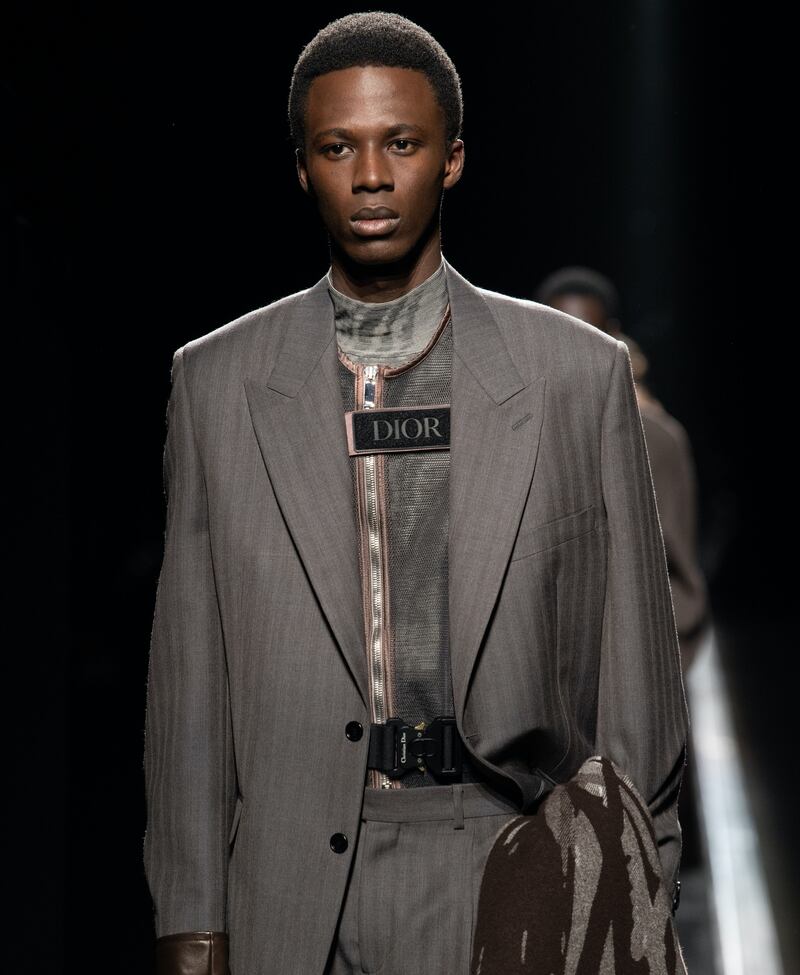
Dior Autumn/Winter 2019 menswear show | Source: InDigital.Tv
Challenges: Dior has long possessed many different identities, which sometimes creates confusion in the market. There has long been a desire to bring this together under "One Dior," but the brand has a long way to go in this regard. The womenswear collection, currently designed by Maria Grazia Churi, stands in contrast to Jones' work, which in turn stands in contrast to the fragrance, jewellery and beauty lines.
In apparel, Jones’ collections might be too directional for the mass-luxury audience that prefers something more easily digestible. “Kim Jones’ style might be too formal for streetwear aficionados who tend to prefer Balenciaga and Off-White and too street for traditional clients of Dior who like classic tailoring,” said Benjamin Simmenauer, an industry consultant and professor at Institut Français de la Mode. “He merged the two, and it’s hard to find a clientele for that.”
CELINE
When LVMH announced in January 2018 that Hedi Slimane would replace Phoebe Philo at Celine, with ambitions to expand into couture, fragrance and menswear, the news hit like a veritable industry earthquake, pitting the designer against Saint Laurent, a fast-growing brand — previously led by Slimane — in rival Kering’s portfolio.
Opportunities: Slimane's influence on the modern menswear silhouette will be crucial to his success at Celine. "He's the king of tailoring," said Toledano, who worked with Slimane at Dior Homme.
While his polarising first women’s collection was met with scepticism, a better-received second effort, combined with a swift overhaul of the retail network, has kept LVMH confident that Slimane — whose greatest talent is a single, scalable creative vision — will able to develop Celine into a multi-billion-dollar house.
Challenges: Even though Celine has sold menswear occasionally over its history, Slimane is now building a menswear business from scratch, which requires significant investment — and patience. Early market reports suggest that Celine is still waiting for market momentum to hit.
GIVENCHY
Clare Waight Keller’s reign at Givenchy has come with early critical applauds. Recently, she turned her focus onto the menswear category, where her predecessor Riccardo Tisci saw significant success.
Opportunities: Waight Keller is a precise and determined designer, whose first full menswear collection for Givenchy, shown at Pitti Uomo in June 2019, was a statement in colour and tailoring. Whether or not her vision will be differentiated enough to win over consumers must still be tested especially at the high price point that the brand has chosen.
“The Givenchy name is very powerful,” Simmenauer said. “Once the direction is clear and collections include iconic pieces, it can be extremely strong.”
Challenges: The house must reckon with Tisci's customer, who expects elevated streetwear from the label. "Givenchy is in the shadow of other brands in the group's portfolio," Simmenauer added. "It needs to find its place."
BERLUTI
LVMH’s most traditional menswear label — LVMH's only pure menswear player — is now under the watch of former Dior Homme designer Van Assche, who was once Slimane’s assistant.
Opportunities: Berluti has a very strong DNA in men's shoes and other leather goods, a key growth category, and Van Assche's minimalist aesthetic is complementary to its more conservative identity.
While ready-to-wear is a small portion of sales, the company is tapping into the growing ultra-luxury segment, opening a showroom on Paris' Left Bank during Paris Fashion Week that is dedicated to tailoring and meant to accommodate the brand's best customers.
Challenges: Berluti has struggled to recast itself since the departure of Alessandro Sartori in 2016, after five years at the label. Three designers within two years is a lot for any brand, even one that has never been known for a star designer. (Before Van Assche, there was Haider Ackermann.)
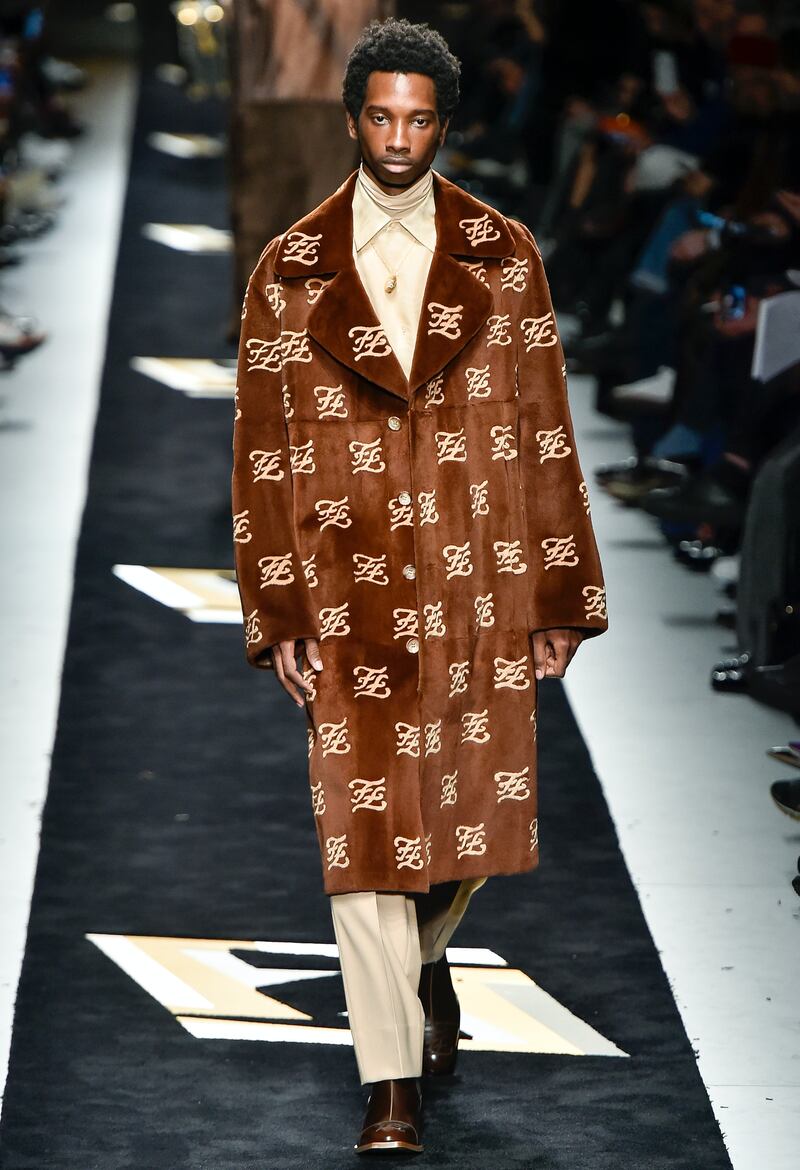
Fendi menswear Autumn/Winter 2019 | Source: InDigital.Tv
What’s more, the culture of casualisation has challenged suiting brands like Berluti more than any other segment of the market. Van Assche — who is showing only his second collection for the label this week — has incorporated casualwear elements into his designs, tweaking the logo and featured it on sweatshirts and bomber jackets. But he can’t dabble in streetwear like Abloh or Jones do; their labels are more loosely defined.
FENDI
Designed by Silvia Venturini Fendi, men's has traditionally been a minor player in the Fendi universe. But that changed in 2011 with the relaunch of Fendi Man. The brand, known for its playful accessories and novel artist collaborations, is now moving further into tailoring. For the Autumn/Winter 2019 collection, Venturini Fendi chose Fendi women's creative director Karl Lagerfeld — who passed away in February 2019 — as the season's artistic partner, coinciding with the shift. "Silvia had the intuition that men will put on jackets again," said Chief Executive Serge Brunschwig.
Opportunities: Fendi's success in accessories is translating into the men's market. For the men's Autumn/Winter 2019 season, Fendi released the first men's version of its famous "Baguette" handbag. The brand is also working to better align the men's and women's collections, staging its first-ever co-ed show in Shanghai in June 2019.
“It made sense because Karl and Silvia had collaborated on the two collections, men with Karl as the guest artist and women. The two collections were in dialogue,” Brunschwig said.
Challenges: "Like for all brands, it's about staying in fashion," Brunschwig said, adding that hiring the right talent and building a strong retail network are a focus.
The brand must also build beyond its highly recognisable logo. "The powerful logo is a strength, but it's also the strength of competitors that are bigger, such as Gucci," Simmenauer said.
LOEWE
In January 2019, five years after joining the Spanish house, designer Jonathan Anderson staged his first-ever dedicated men's runway show for the label.
Opportunities: Anderson's androgynous appeal allows for a natural crossover between his women's and men's collections, which plays to the rise in gender-fluid clothing. Loewe's growing accessories business also possesses a gender-neutral appeal.
Challenges: The brand's awareness among luxury consumers remains lower than other houses in the group. The key is to expand the brand's footprint while staying true to the creative message.
LORO PIANA
LVMH bought a majority stake in the Italian textile manufacturer, known for its lustrous fabrics, in 2013. It generates three-quarters of its business from finished products, the rest from supplying textiles to other brands.
Opportunities: Positioned in the uppermost luxury bracket alongside Hermès, Brunello Cucinelli and Kiton, Loro Piana appeals to the "quiet luxury" clientele that is looking for comfort. What's more, it's expertise is in knitwear, one of the only ready-to-wear categories that performs well on a regular basis.
Challenges: The label has only begun to communicate in a way that gives it a contemporary relevance. In order to compete against the likes of Hermès and Cucinelli, it will need to develop a few key hero products that distinguishes it beyond the materials it uses.
Disclosure: LVMH is part of a group of investors who, together, hold a minority interest in The Business of Fashion. All investors have signed shareholders’ documentation guaranteeing BoF’s complete editorial independence.
Related Articles:
[ Men Are Changing. Are Brands Keeping Up?Opens in new window ]
The fashion giant has been working with advisers to study possibilities for the Marc Jacobs brand after being approached by suitors.
A runway show at corporate headquarters underscored how the brand’s nearly decade-long quest to elevate its image — and prices — is finally paying off.
Mining company Anglo American is considering offloading its storied diamond unit. It won’t be an easy sell.
The deal is expected to help tip the company into profit for the first time and has got some speculating whether Beckham may one day eclipse her husband in money-making potential.